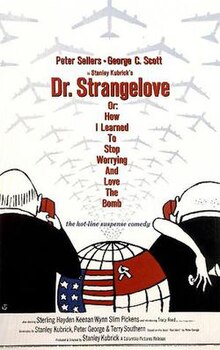
I recently received an expository challenge: identify three key events from the "cold war" and describe each in 3-4 sentences. A test of terseness, I suppose. Okay, gauntlet picked up.
1. Korean War.
North Korea, a nation aligned with the Soviet Union and the newly declared People's Republic of China, invaded South Korea in June 1950. U.S. infantry units began arriving in the south on July 1. The North Korean army had been effectively destroyed by the middle of that October, but matters escalated with the entry of Chinese troops into the peninsula late that month, and their defeat of US troops at Unsan on November 1. Eventually, a military stalemate developed in the middle of the peninsula, which is where the default line of ceasefire was drawn in 1953, at war's end.
2. "Missile gap" charges.
In the 1960 Presidential campaign in the United States, Senator Kennedy charged that the outgoing Eisenhower administration had allowed the Soviets to acquire a strategic nuclear advantage he called the "missile gap." This was a natural impression created by some real Soviet accomplishments, including the launch of the first artificial earth satellite, Sputnik, in October 1957. But historians agree the only actual missile gap was very much to the advantage of the United States.
3. Cuban missile crisis.
On October 14, 1962 an American spy plane flying over Cuba photographed Soviet missiles there. In the days to come, the Joint Chiefs of Staff strongly urged President Kennedy to respond with an air strike, an act that -- it seems certain -- would have initiated a nuclear exchange between the superpowers. Kennedy opted instead for a blockade of Cuba and a demand that the missiles be removed. Despite jitters the crisis was in time resolved peaceably.
Comments
Post a Comment